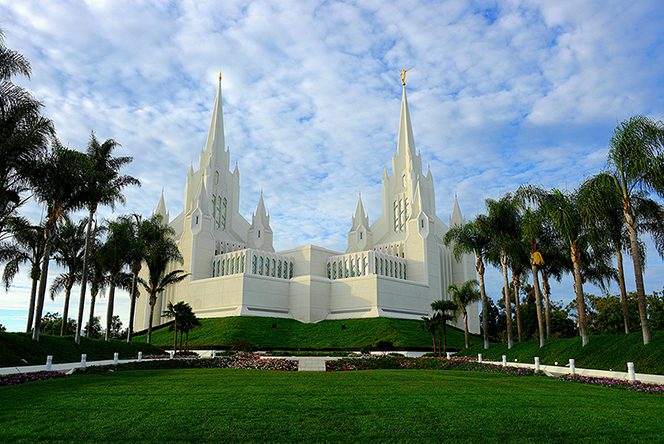
***
Curiously, this is from Illinois News Live: “A new movie about the witnesses of the Book of Mormon premiere in eastern Idaho”
***
And here’s something that some of you will find interesting:
“Thinking with Ryan Burge: Concerning young Latter-day Saints, third parties and life post-Trump”
(Please note that I’m not posting about politics. I don’t do politics here any more. I’ve heard that the country recently changed presidents, but I can’t confirm it. I have no political opinions.)
I like this one, too:
“What senior Church leaders and NAACP leaders taught about contention, racism, love”
And this, from a website called Distractify:
“Gladys Knight Found Mormonism Late in Life”
I’m a descendent of Joseph Knight Sr., through Joseph Knight Jr. So I think that I’m going to claim Gladys Knight as my long-lost cousin.
Finally, are you familiar with this?
“Why Did David Whitmer Never Return to the Church?”
***
I published the column below in the 22 May 2014 issue of the Deseret News:
Some skeptics, responding (rather defensively, I think) to the accounts given by the witnesses to the Book of Mormon, attempt to dismiss them by citing the fallibility of eyewitnesses and the unreliability of human memory. Not wishing to attack the honesty or the sanity of the witnesses — approaches not easily reconciled with the historical evidence — they still hope to neutralize the witnesses’ claims.
Both eyewitness errors and false memories are legitimate issues, of course, and scientific and scholarly data exist on each.
I do not believe, though, that either concern applies to the Book of Mormon witnesses. (I’m thinking aloud here, and would welcome thoughtful, serious responses.)
Yes, it’s true that eyewitnesses sometimes get things very wrong. A person mugged at gunpoint, for example, may well have been so focused on the gun that she failed to register her attacker’s face or, more dangerously, remembers it incorrectly.
And, yes, even less stressful memories can be fallible. Probably all of us have had the experience of discovering that something we clearly “remembered” didn’t actually occur at all the way we “recalled.” Moreover, the further back the memory lies, the more problematic it can become. With several matters from my childhood and early years, for instance, I’m not sure that I actually remember them or whether, instead, I simply remember what I was told about them. Do I really recall my grandmothers, neither of whom I saw very much and both of whom died when I was 5, or am I merely remembering images from their photographs?
But these cases seem very different from that of the witnesses to the Book of Mormon.
For one thing, the critics’ skepticism of eyewitness testimony seems notably selective. I’m reasonably confident that, if they saw a neighbor kid climbing over their fence with prize peaches stolen from their tree or watched me vandalizing their car, they would have little doubt about what they had witnessed. Theoretical reservations about eyewitness testimony and the confusions of memory would likely seem rather silly to them under such circumstances. “I know what I saw!” they would (reasonably) insist.
Additionally, in the case of the witnesses, we’re considering people whose stories of their encounters with the plates — and, in the cases of Martin Harris, Oliver Cowdery and David Whitmer, with several other artifacts, as well as with an angel and the voice of God — were first told, and first reduced to writing, shortly after the encounters took place. These aren’t vague childhood recollections, dimly remembered after the passage of decades.
And there is the significant fact that their accounts agree. I look, here, to a fictional narrative from the last act of Shakespeare’s “A Midsummer Night’s Dream.” Theseus, the Duke of Athens, and his soon-to-be bride, Hippolyta, queen of the Amazons, are discussing the amazing story of mix-ups and enchantments in the forest just outside the city that they have just heard from two young Athenian couples (Hermia and Lysander, Helena and Demetrius).
“Tis strange my Theseus,” observes Hippolyta, “that these lovers speak of.”
But the skeptical duke credits none of it. He replies,
“More strange than true. I never may believe
“These antique fables, nor these fairy toys.
“Lovers and madmen have such seething brains,
“Such shaping fantasies, that apprehend
“More than cool reason ever comprehends.
“The lunatic, the lover and the poet
“Are of imagination all compact.”
They were probably just mistaken, he suggests: “In the night, imagining some fear, how easy is a bush supposed a bear!”
Hippolyta, on the other hand, has been impressed by the consistency of the accounts given by the four young people — which, the audience happens to know, are true (within the overall fiction of Shakespeare’s story):
“But all the story of the night told over,
“And all their minds transfigured so together,
“More witnesseth than fancy’s images
“And grows to something of great constancy.”
And that’s among the most impressive aspects of the witness accounts, as well.
Had thousands, hundreds or even dozens of people been given the opportunity to see and “heft” the plates, and had only 11 of them later claimed to have done so, one might respond that, naturally, a large group will always include a few who were confused or have faulty memories.
In the case of the Book of Mormon witnesses, however, all who had the opportunity to see or to touch did, in fact, see or touch, and all of them told the same story until they died.
Posted from San Diego, California












